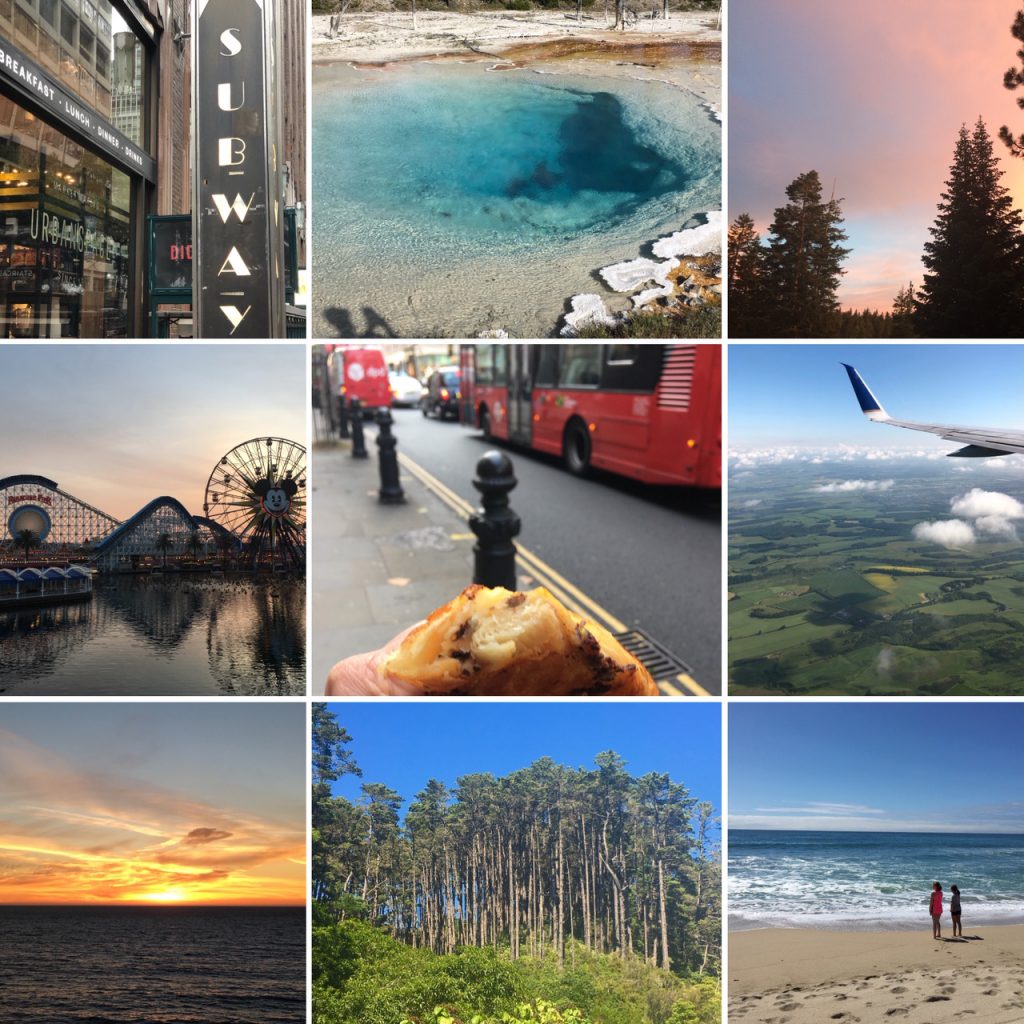
I’m on a number of gluten-free and celiac groups on Facebook and I’m always amazed at the number of questions people have around travel. Whether it is by plane or car, the same concerns pop up. They want to know how to travel gluten free. The problem is that the answer can vary based on where you go (domestic vs international) and if you have connecting flights. As an avid traveler, mostly of the US, Europe, and a bit in New Zealand and Australia, here are some tips that I hope will help. This other post has some simple tips if you want another article. I’ve sorted the post below into categories and provided resources at the end. I hope this takes the stress out of how to travel gluten free!
*Note: this post includes affiliate links. It does not affect the price you will pay. However, a very small percentage of the sale of any item you buy through the links I provide will go to help fund the cost of maintaining this blog. Thank you in advance!
Traveling by Car
Let’s start with the easiest of all; the road trip. I consider this easy because you can bring a cooler, electrical appliances like induction burners, mini electric pressure cookers, or even a waffle maker. When we go on a road trip, we usually stay at either a hotel chain that has a kitchen or an Airbnb. I wrote about our first ever big big road trip here.
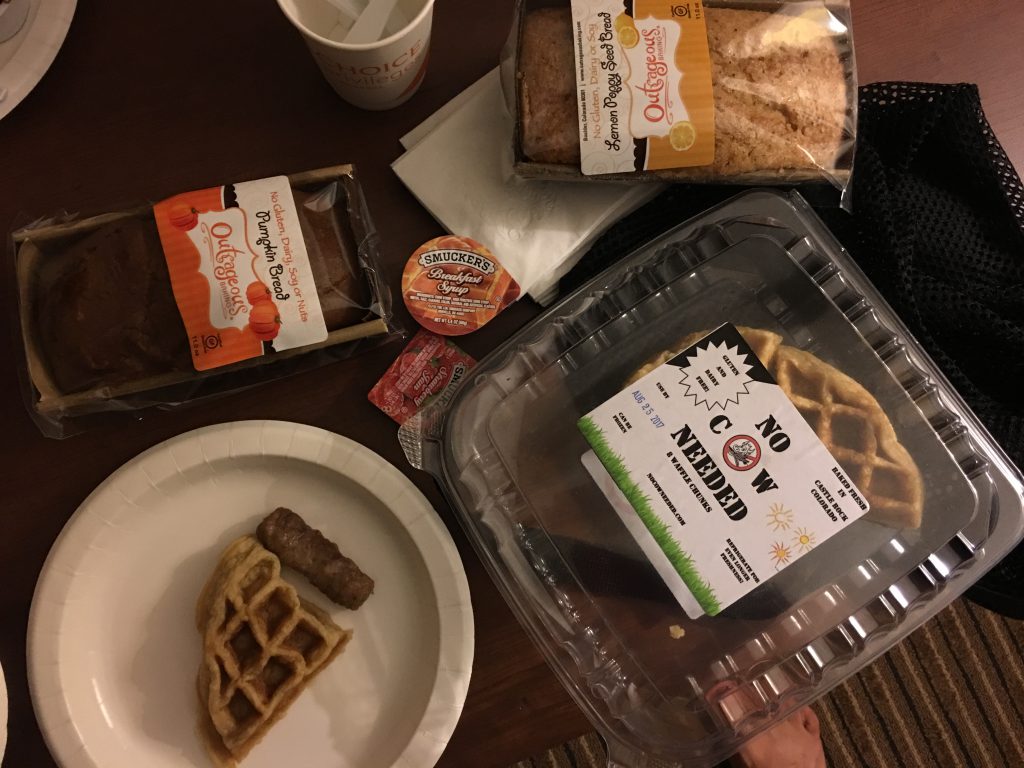
Hotel chain room kitchens tend to be very clean, almost always provide a new sponge and mini dishwashing soap, as well as clean stainless steel pots and pans. Some might even provide a new set of pots if you ask. You might want to also consider bringing the following:
- Foil/parchment to cover trays for baking or cutting boards for cutting
- Toaster bags to toast bread in non-gf toasters
- Ziploc bags and/or glass or plastic containers for leftovers
- Thermos to serve heated food for lunch or dinner on the go (heat in your kitchen and eat on the road)
- Pots/pans/knives/cutting board
- Basic spices like salt and pepper, oil or butter for cooking, nut butter and jelly, etc.
I use the app/website Find Me Gluten Free to find dedicated or highly recommended restaurants on our trip. Make sure to read the reviews and look for those marked as “celiac friendly”. You may have to read between the lines as a bad review may not mean it’s not safe. Carrie from For Gluten Sake also just released an app of dedicated gluten-free restaurants from around the world. Visit her webpage to get more info.
At the bottom of this post is a list of other resources I use to find safe gluten-free food.
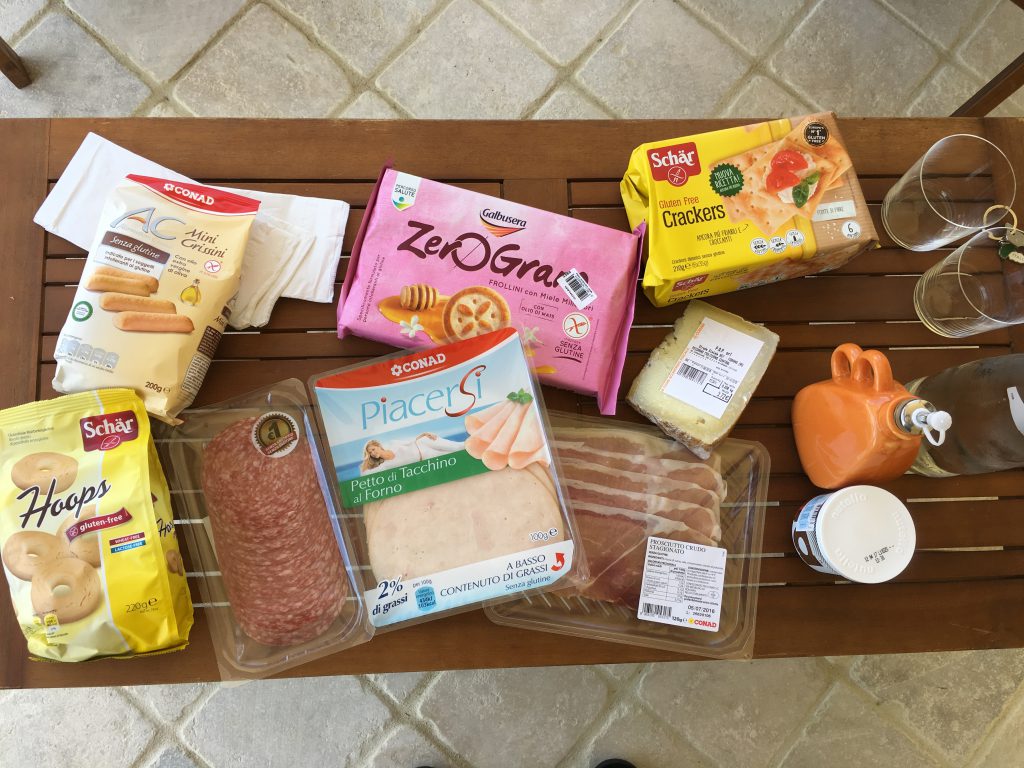
For grocery stores, almost every major chain carries some type of gluten-free product. We tend to bring our favorite products like breads and gf pretzels and then buy fruit, vegetables, and plain meat on the road. And don’t forget ice packs or ice to keep your cold food cold.
In every country we have traveled, we have always been able to find gluten-free food in grocery stores. Italy and England by far have the best selections. Above was our typical road trip food we brought with us when in Italy.
Traveling by Airplane: What to do Before

Traveling by airplane can mean any number of unexpected delays so make sure to be prepared. For domestic flights within the US, there may not be any gluten-free options offered from the airline. We usually eat before we get to the airport as well as bring food on the plane. I often have a whole bag (see below) just in case! Usually on international flights, you can order a gluten-free meal. Make sure to do that at least 3 days before. It’s best to confirm as well.

Depending upon where you are going and what type of accommodation you will have, I recommend to bring the following in your checked bags: a few sheets of both parchment paper and foil (maybe more), toaster bags, different sized ziploc freezer bags, and salt/pepper in small containers. These don’t take up a lot of space and can save you if you need to heat something up. One of my friends also brings a plastic cutting board, knife, and a pan.
If you bring any liquids or gels, even peanut butter, over 3.4 ounces, these need to go into your packed luggage. If I do take liquids that can leak, I place them in a ziploc bag and then in another bag. I have traveled with olive oil before and the thought of it leaking into my clothes was worrisome.
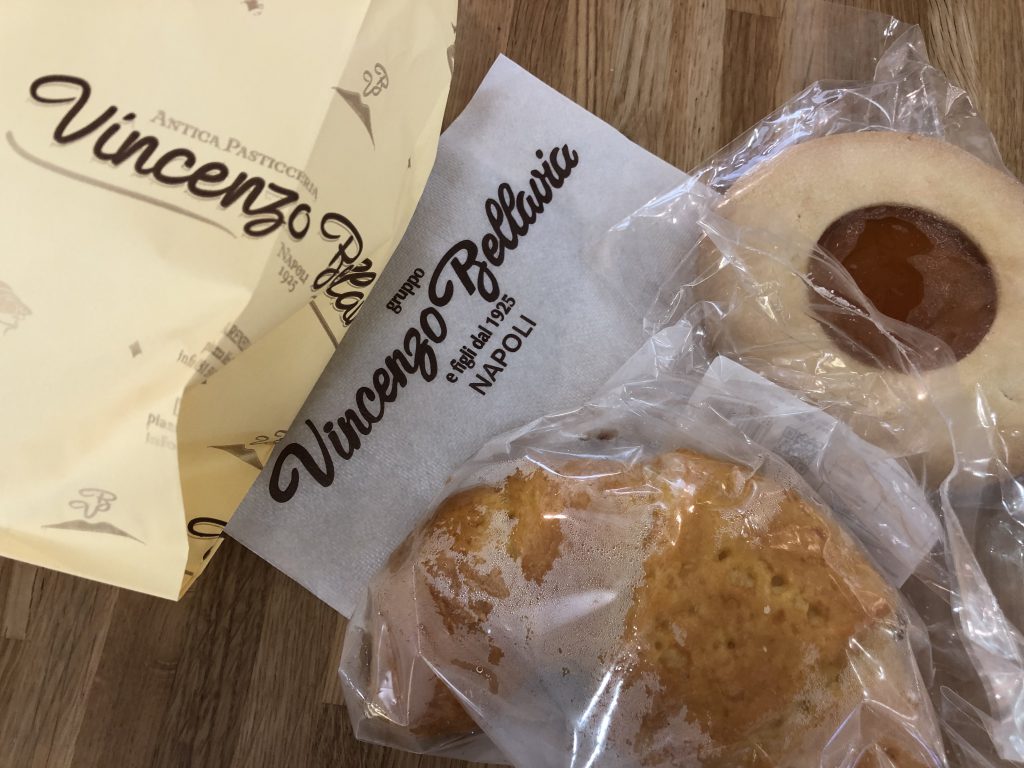
One more thing to check at the airport you are traveling from/to is Find Me Gluten Free (see link above). There might be restaurants or stores with gluten-free options in the airport. If you happen to see a M&S Simply Food, for example, you might be pleasantly surprised to find gluten-free sandwiches, crackers, cakes, and more. I’ve also seen gluten-free sandwiches in Newark, Auckland, and Amsterdam airports. In the Orlando airport, the Jersey Mike’s had gluten-free bread and were able to safely make me a sandwich. In Naples, Italy, one bakery had packaged gluten-free pastries. It varies by airport; make sure to ask questions if you aren’t sure.
The Night Before Travel

My best tip for how to travel gluten free is to plan. A few days before, I’ll take inventory of what’s in the fridge (i.e. what has to get used up) and think about what I can bring. Remember a 2 hour flight could easily change into a 6 hour trip with delays. Things I like to prepare the night before, depending upon how early the flight is, are: sandwiches (Canyon Bakehouse is my favorite brand for bread), veggie crustless quiche, pancakes, cheese sticks or slices, a few pieces of rolled up meat or sliced salami, olives, cut fresh fruit, small amount or individually packaged hummus, cut veggies like carrots or cucumber slices, salad with a small container of dressing, etc.
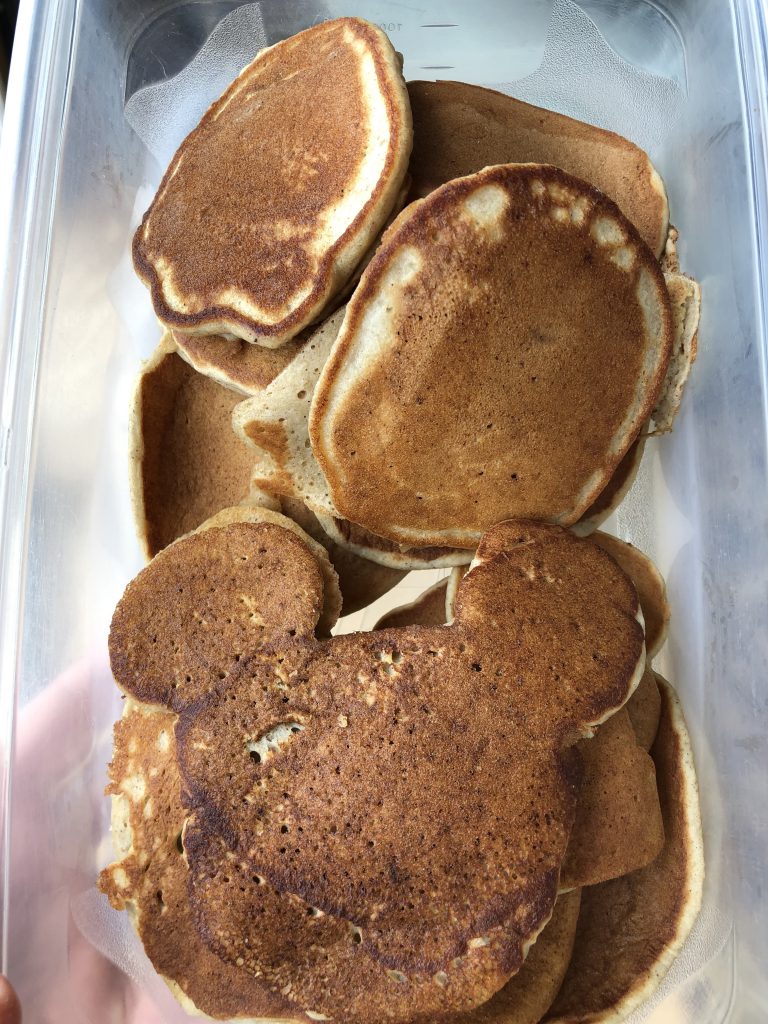
The rule of thumb for liquids is under 3.4 ounces/100 ml. A 4 ounce container of hummus is not ok but if it’s spread on bread, it’s fine. Same goes for jelly, butter, or peanut butter. And bringing a half bottle of something in a 5 ounce container may not work; the container itself has to meet the requirements (I had children’s liquid tylenol taken away once because of that).
One thing to note is that in certain airports, they want all of the food to be out of the bag (it’s easier for them to scan this way). So if you don’t want your orange rolling around on a tray, make sure it’s in some type of container or bag. The picture below was before they made that rule!
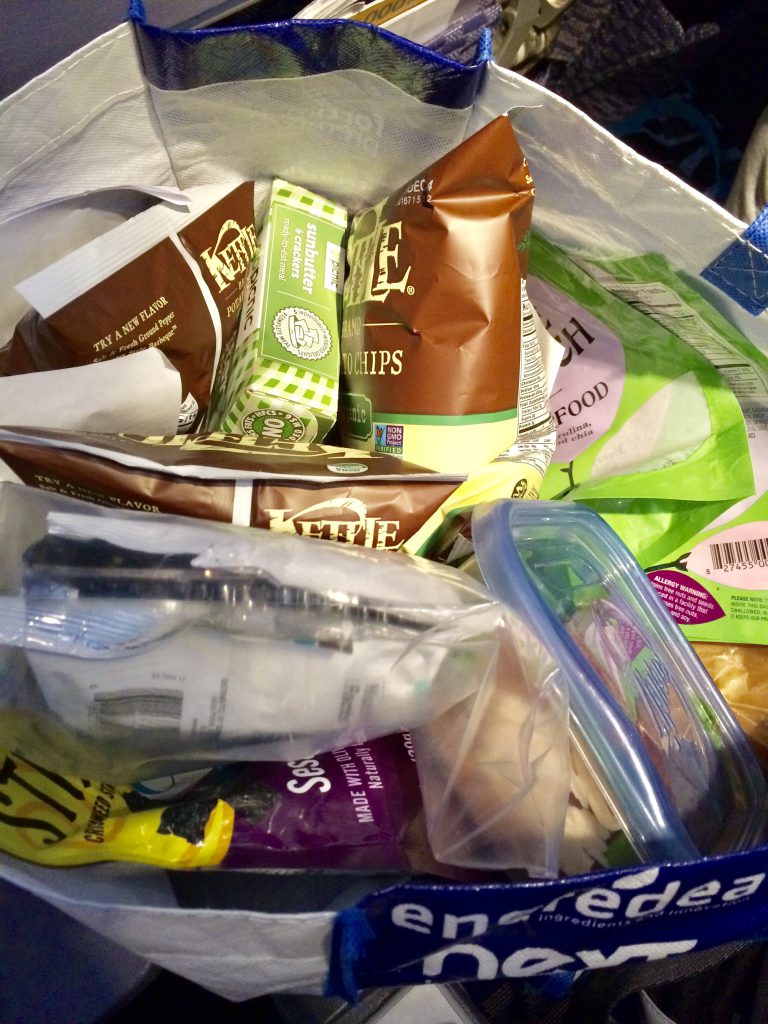
For shelf stable food, I bring about a sturdy reusable shopping bag. This usually includes: individual nut butter and jelly packets, bread, pretzels and crackers, nuts, beef jerky, bars, cookies or a treat, muffins, etc. As you know, there are lots of gluten-free products these days so bring your favorites or food that will keep you full.
The amount of food I bring really depends upon how far we are traveling. Currently, our family consists of two adults and two teens, one of which is a boy so really, I pack for more than four. I generally have enough food for one meal with snacks. If it’s international, even if I have ordered a meal, I bring enough food for each person to eat the whole trip (plus extra for my teen boy). One flight, one of our gf meals did not get onto the plane. Can you say slim pickings? On a recent flight, two of the main items had soy. Next to gluten, soy is like kryptonite for me. I had almost nothing I could eat on my tray. But luckily I had a ham sandwich, banana, and crackers. That was plenty for the journey.
Getting Through Security

If you are trying to navigate how to travel gluten free, getting through security can be stressful! When you are traveling with food, make sure to give yourself extra time. I have gone through security in a lot of airports and all I can say is, each time is different. Some times I have to take all of my food out of my bag; other times not. One time, the TSA agent asked me to take out anything packaged that was open. This can add a few extra minutes to an already long wait. I like to have extra time to refill water bottles (there is almost always a water fountain past security), go to the bathroom and maybe get a cup of coffee.
Your cold food should be kept cold to minimize bacterial growth. If you are going to eat something like a turkey sandwich in an hour or so of when you leave your house, I wouldn’t worry too much. But, if you are bringing food that you are going to eat in 5-6 hours after you leave your house, it should be kept cold. Another option is a PackIt freezable lunch bag. The freezer packs are built into the lunch bag; perfect for traveling!
I have always been able to travel with a frozen ice pack in the US. Recently I tried traveling with a frozen bottle of water in the United Kingdom. Rather than getting pulled aside, I asked if it was ok. The first thing the agent asked me was whether or not I had a doctor’s note. I did not. So I tossed it. Lesson learned. At least the food was being kept cold prior to use getting on the plane.
On another trip, I had a frozen ice pack but it had melted by the time I got to my international connection airport. In this instance, we went through border control then went through security again. Our luggage was checked through. If I had gotten my checked bag, I could have placed it in my suitcase. So, in this situation, I had to throw out my melted ice pack. Luckily it wasn’t a good one. I recently found some inexpensive ones in the grocery store and bought a few for less than $2 each. I’ll use these for our next flight.
Otherwise, before you go through security, double check your bag and backpack for liquids (how do I always forget that little sunscreen?!). This will save you and your fellow travelers a lot of frustration.
Gluten Free Airline Food-Is it safe?
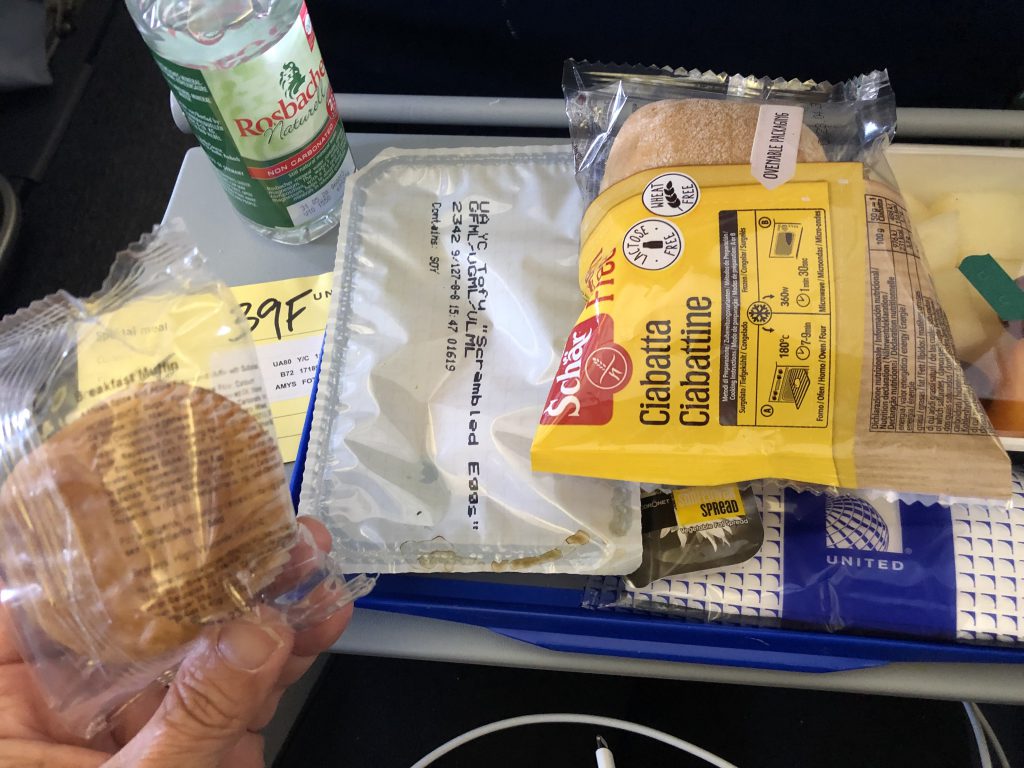
The image you see above is from a meal I had in July 2019. One thing I have noticed is that the airlines are using pre-made trays and only putting on the gluten-free entree. On both of my flights on United Airlines, Newark to Manchester, UK and back, there was a wheat item on my tray. The first was a roll. I’m all about “if it looks too good to be true, it probably isn’t”. Gluten-free rolls have a certain look. As I turned this roll over, I thought “Gee, this looks like a gluten roll” and I was correct. It was labeled with “contains wheat”. I had to quickly tell me kids to not eat it. Yet another of the perils we must face if we are learning how to travel gluten free.
After having this experience, I did the same thing on the way back when I saw a muffin. The one in the photo above also has wheat. In the “old days”, my gluten-free meals never had anything but only gluten-free food. After this experience and hearing the same thing from many many people, I would highly recommend to always check everything on your tray. The actual meal should be labeled as well.

But there’s one more issue here. I also eat soy-free and mostly dairy-free. I can have a little dairy but soy does a number on my tummy. On this last flight in July, the meal was scrambled tofu. I get it. It’s easier to produce a meal that is gluten-free, vegetarian, AND vegan to accommodate more travelers. Except in this case where tofu was the main entree and the roll also had soy. Yet another reason to always have extra food with you just in case.
And I should add that I have tested our airplane food with our Nima Sensor (I’m a fan). It gave me peace of mind when we flex on Air New Zealand that the food I served my daughter was safe. I wrote an article about our experience with Nima here if you want to read more.
Arriving at Your Destination
My last bit of advice is once you arrive in your destination, if you have to go through customs, make sure you know the rules for what you can and can’t bring in. Generally, for international destinations, meat, dairy/cheese, and fruit are not allowed (it mainly depends upon where you are flying to/from). In Australia, I was able to bring in a beef stick that was in a package; I had to throw out the bag that was opened. Another time, as we were entering New Zealand, we almost blew it by forgetting about a bag of cheese. Apparently the fines are quite high. If you haven’t finished those foods, you might have to either eat them or toss them. Just be prepared.
Where to Get Gluten Free Food
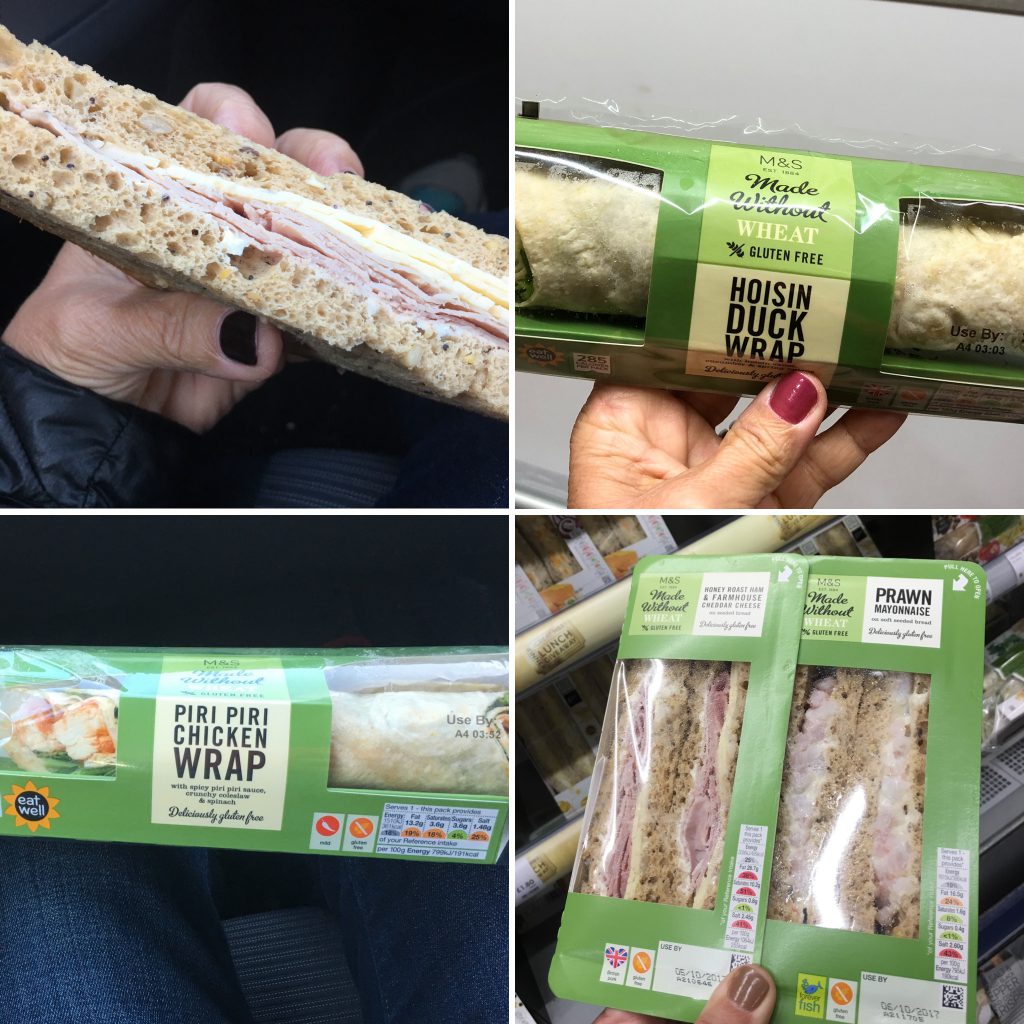
If you think I travel just so we can eat good gluten-free food, you are correct! Before we arrive at a destination, I will have a general idea of how we are going to eat after doing some research. Figuring out how to travel gluten free might include a combination of grocery stores and safe restaurants. I search Find Me Gluten Free, look for hashtags on Instagram, e.g. #glutenfreerome, check Trip Advisor using “gluten-free” as a search option, and research nearby supermarkets using google maps. Facebook is a good resource with gluten-free groups for travel and for specific areas of the world. I also google “gluten free (our destination)” to check for blog posts from other bloggers.
We almost always stay in a hotel with a mini fridge. In the US, if there isn’t one already, one can be requested. We found one in almost every hotel in Europe as well.
Other Resources for How to Travel Gluten Free
Besides websites for finding places, here are some of the people who I think can give good advice as well as some of my favorite travel recipes:
- Erin Smith, Gluten-Free Globetrotter: NYC expert and world traveler
- Alexis, Alexis Gluten-Free Adventures: All things Disney expert and another world traveler
- Rachel, The Sightseeing Coeliac: Lives in the UK and blogs about world adventures
- Carrie, For Gluten Sake: Lives in Vietnam, world traveler, and just released a dedicated gluten-free app!
- Siân, Gluten-Free Mrs. D: Lives in the UK and travels the world with her twins. She’s quite witty and very nice!
- Alexandra, The Gluten-Free Suitcase: UK based with lots of world travel
- Recipes for gluten-free pancakes, waffles, crustless quiche, and blueberry muffins
- Know of a good site? Leave a comment! Just scroll down from this entry.
The bottom line is you can travel and eat safely. It just takes some research and development, as my mom used to say. I hope this post helps you with how to travel gluten free!


Comments are closed.